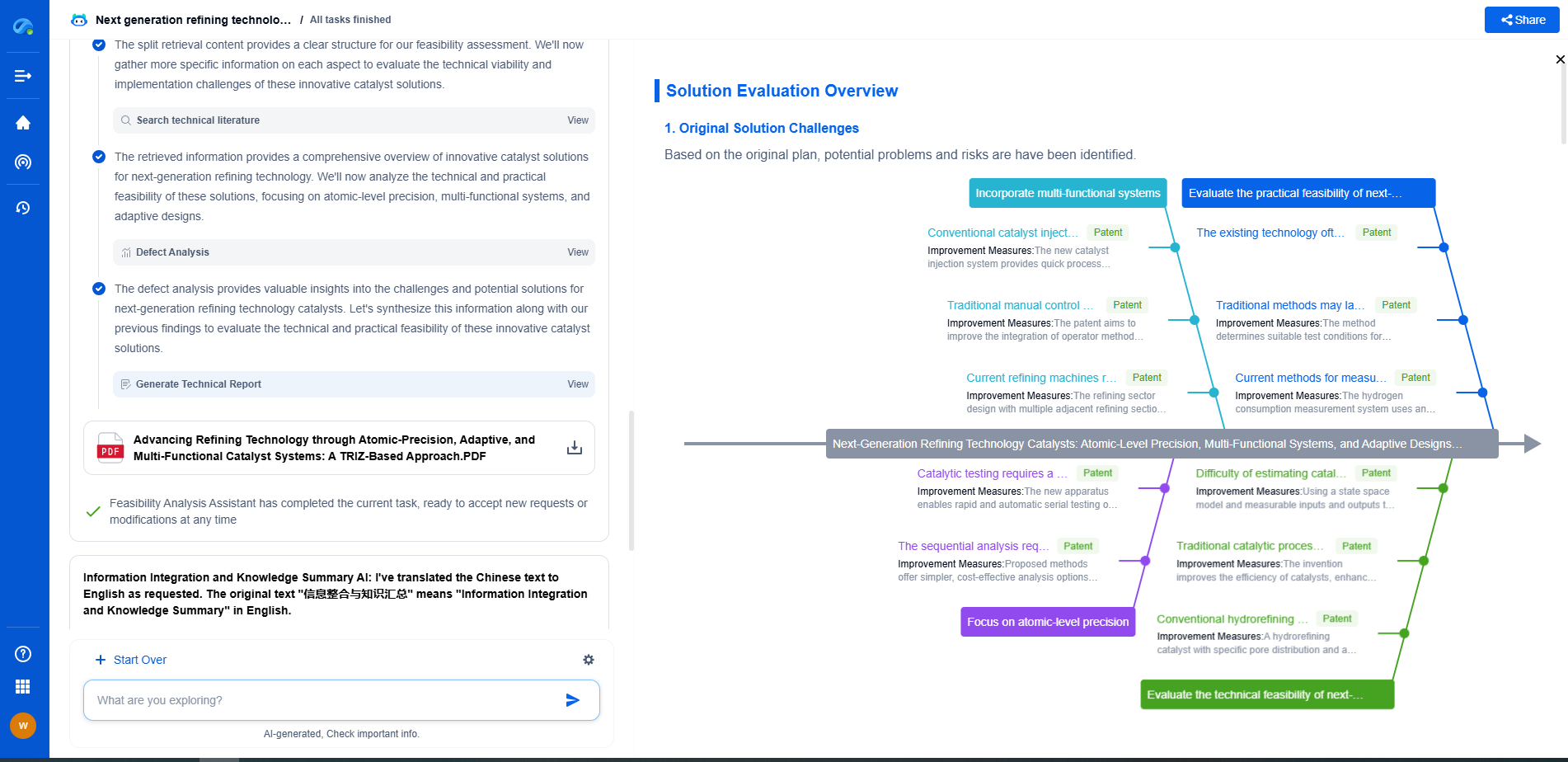Robotic exoskeleton vs passive orthosis: Which is better for rehab?
JUN 26, 2025 |
In recent years, rehabilitation technologies have made significant strides, offering improved assistance and support to individuals recovering from various musculoskeletal and neurological conditions. Among these advancements, robotic exoskeletons and passive orthoses have emerged as promising tools. These devices, while different in functionality and purpose, share the common goal of enhancing mobility and improving the quality of life for patients. This blog explores the key differences between robotic exoskeletons and passive orthoses, examining their respective benefits and drawbacks in rehab settings.
Understanding Robotic Exoskeletons
Robotic exoskeletons are wearable devices equipped with motors and sensors designed to assist and amplify human movement. Typically, these exoskeletons consist of rigid structures that support the body's joints and limbs, controlled by complex algorithms that mimic natural movement patterns. They offer powered assistance, enabling users to perform movements that might otherwise be impossible due to injury or disability.
Advantages of Robotic Exoskeletons
One of the primary advantages of robotic exoskeletons is their ability to provide dynamic support, adjusting to the user's needs in real time. They can be instrumental in rehabilitating conditions such as spinal cord injuries, stroke, and cerebral palsy, where regaining mobility is a critical part of recovery. Additionally, these devices often feature customizable settings that can be tailored to individual therapy goals, offering personalized rehabilitation plans.
Robotic exoskeletons also contribute to motivation and engagement during rehab sessions. The interactive nature of these devices provides immediate feedback, which is crucial for tracking progress and setting achievable milestones. This feedback loop can enhance a patient’s morale and commitment to rehabilitation.
Challenges Associated with Robotic Exoskeletons
Despite their benefits, robotic exoskeletons come with challenges. They are typically expensive, which can limit access for many potential users. Furthermore, the weight and complexity of these devices may not be suitable for all patients, especially those with severe physical impairments or those who tire easily. Additionally, their reliance on technology means that malfunction or technical issues could disrupt therapy sessions.
Exploring Passive Orthoses
Passive orthoses, on the other hand, are simpler, less technologically involved devices that provide support without the need for motors or electronic components. These devices use materials and mechanical structures to assist with joint stabilization and alignment, reducing pain and promoting better posture and movement.
Benefits of Passive Orthoses
The simplicity of passive orthoses is one of their most appealing features. They are generally more affordable and accessible, making them a viable option for a broader range of patients. Passive orthoses are lightweight, which enhances comfort and encourages longer wear time without causing fatigue or strain.
These devices are particularly beneficial in early rehabilitation stages when patients need gentle support to prevent further injury or to correct alignment issues. They can be instrumental in treating conditions such as arthritis, tendonitis, and other musculoskeletal disorders where stabilization and support are paramount.
Limitations of Passive Orthoses
However, passive orthoses do have limitations. By their nature, they do not actively assist movement, which means they might not provide the level of support necessary for patients with significant motor impairments. For individuals requiring more dynamic assistance, passive orthoses may fall short in facilitating the desired level of mobility and independence.
Choosing the Right Device for Rehabilitation
The decision between using robotic exoskeletons and passive orthoses in rehabilitation largely depends on the individual needs and specific condition of the patient. For those requiring intensive motor assistance and comprehensive movement feedback, robotic exoskeletons might be the preferred option. In contrast, patients needing simple support for joint stabilization and alignment might benefit more from passive orthoses.
Conclusion
In conclusion, both robotic exoskeletons and passive orthoses offer unique benefits for rehabilitation, but the choice of which is better depends on a variety of factors including the patient’s condition, financial considerations, and specific rehabilitation goals. By understanding the advantages and limitations of each device, healthcare professionals can make informed decisions to optimize rehabilitation outcomes and improve the quality of life for patients recovering from debilitating conditions.
Ready to Redefine Your Robotics R&D Workflow?
Whether you're designing next-generation robotic arms, optimizing manipulator kinematics, or mining patent data for innovation insights, Patsnap Eureka, our cutting-edge AI assistant, is built for R&D and IP professionals in high-tech industries, is built to accelerate every step of your journey.
No more getting buried in thousands of documents or wasting time on repetitive technical analysis. Our AI Agent helps R&D and IP teams in high-tech enterprises save hundreds of hours, reduce risk of oversight, and move from concept to prototype faster than ever before.
👉 Experience how AI can revolutionize your robotics innovation cycle. Explore Patsnap Eureka today and see the difference.
- R&D
- Intellectual Property
- Life Sciences
- Materials
- Tech Scout
- Unparalleled Data Quality
- Higher Quality Content
- 60% Fewer Hallucinations
Browse by: Latest US Patents, China's latest patents, Technical Efficacy Thesaurus, Application Domain, Technology Topic, Popular Technical Reports.
© 2025 PatSnap. All rights reserved.Legal|Privacy policy|Modern Slavery Act Transparency Statement|Sitemap|About US| Contact US: help@patsnap.com

